In the vast tapestry of Earth’s evolutionary history, few transitions are as fascinating as the emergence of birds from dinosaur ancestors. This remarkable evolutionary journey has produced creatures so bizarre that they seem to defy reality, appearing more like science fiction creations than actual animals that once roamed our planet. Today, paleontologists continue to unearth fossils that challenge our understanding of avian evolution and sometimes leave us wondering: are we looking at prehistoric birds or creatures straight out of a sci-fi movie? The following ten prehistoric avian species blur the line between scientific fact and fantastical fiction, demonstrating that truth can indeed be stranger than imagination.
Archaeopteryx: The Missing Link That Looks Like a Movie Prop
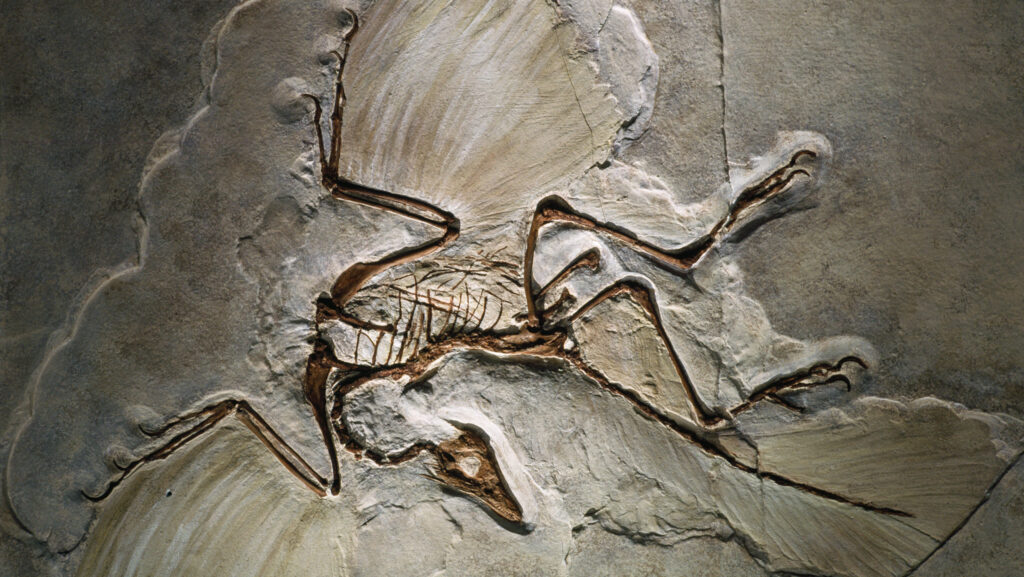
When the first Archaeopteryx fossil was discovered in 1861, it created a sensation that continues to this day. This 150-million-year-old creature from the Late Jurassic period represents one of the most important transitional fossils ever found, displaying features of both dinosaurs and modern birds. With its toothed jaw, bony tail, and clawed wings, Archaeopteryx seems like something a movie prop designer would create to represent an alien species. The preservation quality of these fossils is so exceptional that even the imprints of feathers are clearly visible, allowing scientists to confirm that this creature could indeed fly, albeit not as efficiently as modern birds. Archaeopteryx’s discovery came just two years after Darwin published “On the Origin of Species,” providing crucial evidence for his theory of evolution and demonstrating that nature’s actual creations can be every bit as strange as fictional ones.
Quetzalcoatlus: The Living Airplane
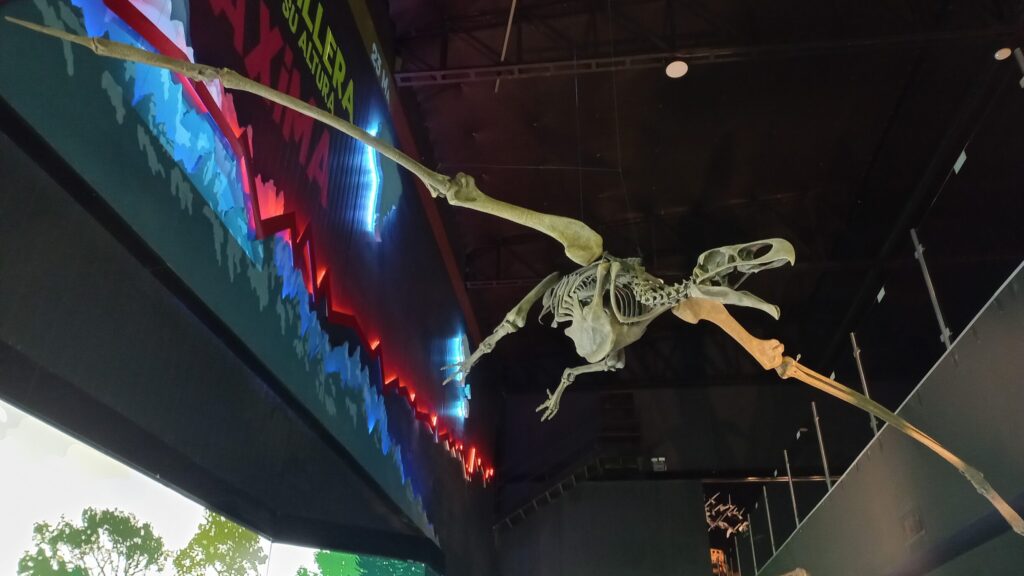
Imagine a creature with a wingspan of up to 36 feet—wider than many small aircraft—soaring through prehistoric skies. Quetzalcoatlus, named after the Aztec feathered serpent god, was one of the largest flying animals ever to exist, with a size that strains credibility. This pterosaur (flying reptile) from the Late Cretaceous period could stand as tall as a giraffe when on the ground, with a bizarre elongated head and beak that made it look distinctly otherworldly. Despite its massive size, paleontologists believe Quetzalcoatlus had a surprisingly light skeleton—perhaps weighing only around 200-250 pounds—allowing it to take to the air despite its enormous dimensions. The mechanics of how such a massive creature could achieve takeoff and sustain flight continue to challenge aeronautical engineers and paleontologists alike, making it seem more like a creature from science fiction than a real animal from Earth’s past.
Microraptor: The Four-Winged Dragon
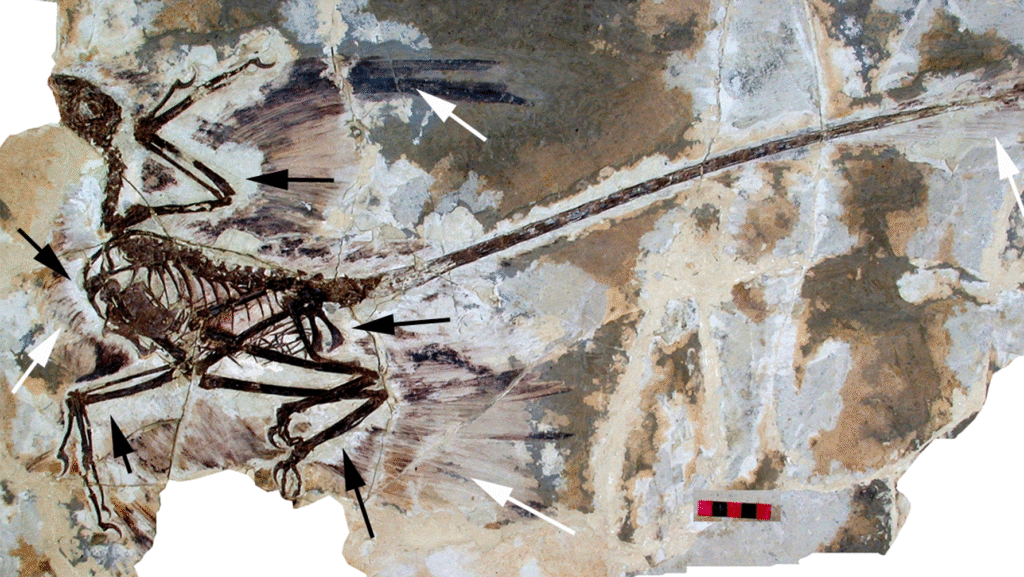
In the realm of science fiction, writers often imagine fantastic creatures with multiple wings, but nature beat them to it by millions of years with Microraptor. This crow-sized dinosaur from Early Cretaceous China possessed not just two but four wings, with flight feathers on both its arms and legs, creating a configuration never seen in any modern animal. Microraptor’s iridescent black feathers would have given it a shimmering appearance in sunlight, adding to its otherworldly quality. Paleontologists believe this unusual creature may have glided between trees using all four limbs to generate lift and control its descent, possibly in a manner similar to a biplane. The discovery of Microraptor in 2003 forced scientists to reconsider their theories about the evolution of flight, suggesting that four-winged gliding may have been an intermediate step before the development of the two-winged flight seen in modern birds.
Hesperornis: The Toothy Penguin-Loon Hybrid
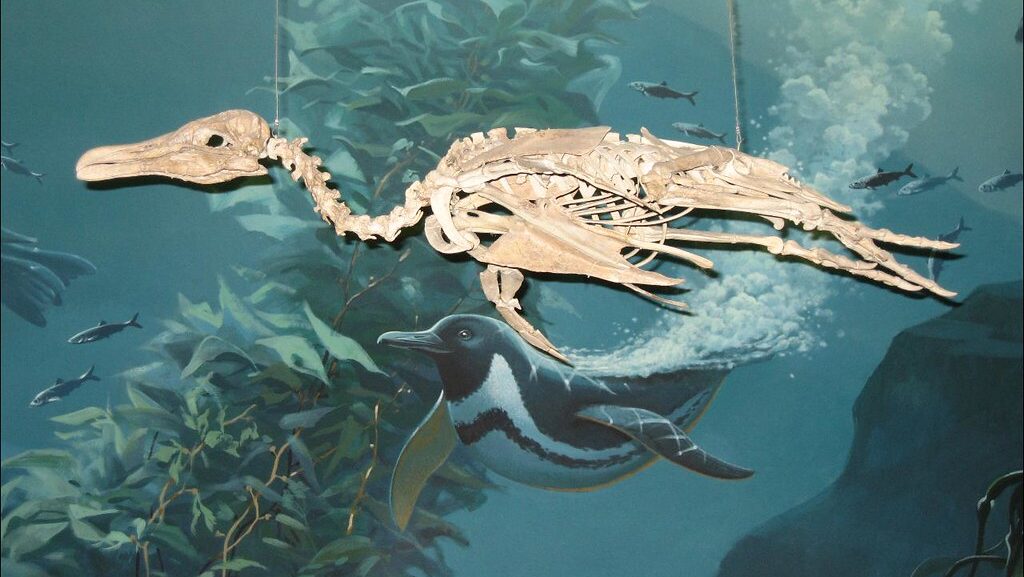
During the Late Cretaceous period, while T. rex roamed the land, the oceans were home to Hesperornis, a flightless diving bird that seems like a creature designed for a science fiction film. Reaching lengths of up to six feet, this aquatic predator combined features that would seem bizarre to modern eyes: powerful webbed feet positioned far back on its body like a loon, a streamlined form reminiscent of penguins, and most startlingly, jaws lined with sharp teeth set in grooves rather than sockets. Unlike modern birds, Hesperornis retained these reptilian teeth, which it used to catch slippery fish and squid in the ancient Western Interior Seaway that once split North America. The combination of bird-like and reptilian features in Hesperornis highlights the complex mosaic nature of evolution, where ancestral traits can persist alongside newly evolved adaptations. If encountered today, this toothed marine bird would certainly be mistaken for a fictional creature rather than a product of natural evolution.
Titanis: The Terror Bird That Rivaled Dinosaurs
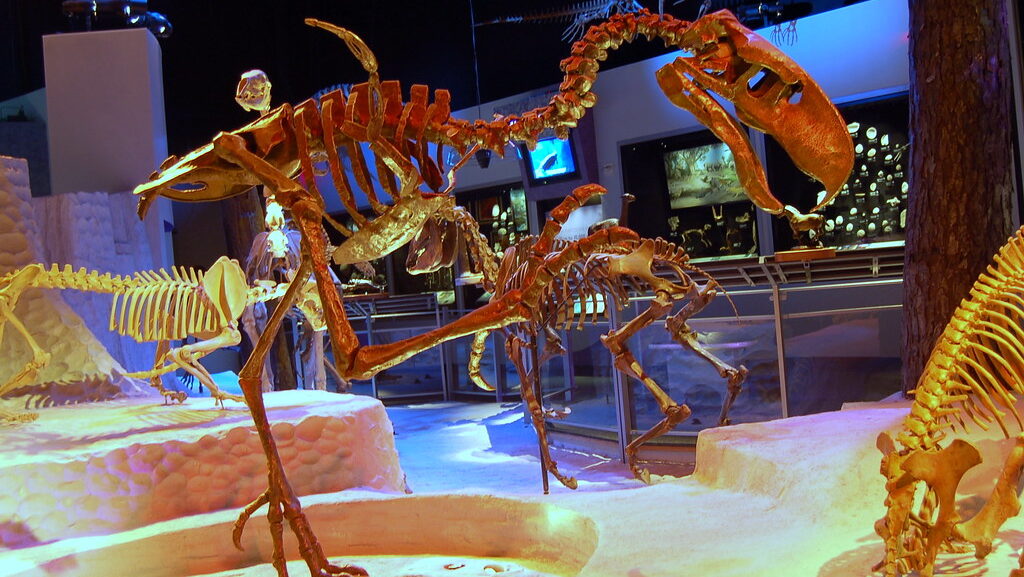
Long after the dinosaurs vanished, a group of flightless birds evolved to become apex predators, with Titanis walleri standing as perhaps the most terrifying example. This “terror bird” stood nearly 8 feet tall and weighed around 350 pounds, with a massive hooked beak designed for tearing flesh and crushing bones. Unlike the graceful flightless birds of today, Titanis possessed powerful forearms with claws that could grab and hold struggling prey while its axe-like beak delivered killing blows. Remarkably, this prehistoric nightmare survived until relatively recently in geological terms, stalking the landscapes of North America just 1.8 million years ago during the Pleistocene epoch. The concept of giant, predatory birds ruling ecosystems seems like something from a science fiction story about an alternate Earth where dinosaurs never went extinct, yet Titanis was very real and exemplifies evolution’s capacity to produce creatures that seem too fantastic to have actually existed.
Ichthyornis: The Seagull with Dinosaur Teeth
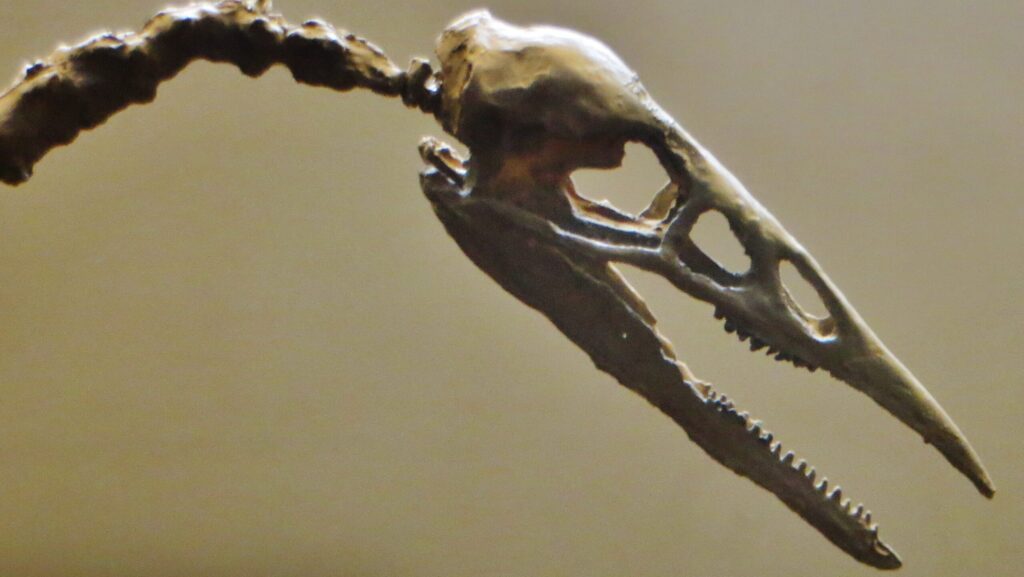
Imagine a bird that looked almost exactly like a modern seagull but opened its beak to reveal rows of sharp teeth. Ichthyornis, a genus of seabird-like creatures from the Late Cretaceous period, represents this evolutionary halfway point between dinosaurs and modern birds. About the size of a modern tern, Ichthyornis possessed fully developed wings capable of powered flight, a keeled sternum for flight muscle attachment, and many other features found in contemporary birds. However, its skull retained distinctly reptilian characteristics, most notably the presence of teeth in both its upper and lower jaws, though the very tip of its beak was toothless and covered with a horny sheath like modern birds. Recent CT scans of well-preserved Ichthyornis fossils have revealed that its brain was intermediate between those of dinosaurs and modern birds, with enlarged visual processing areas but a smaller cerebrum. These creatures remind us that evolution proceeds in mosaic fashion, with some body parts modernizing while others retain ancestral features.
Argentavis magnificens: The Bird That Blocked Out the Sun
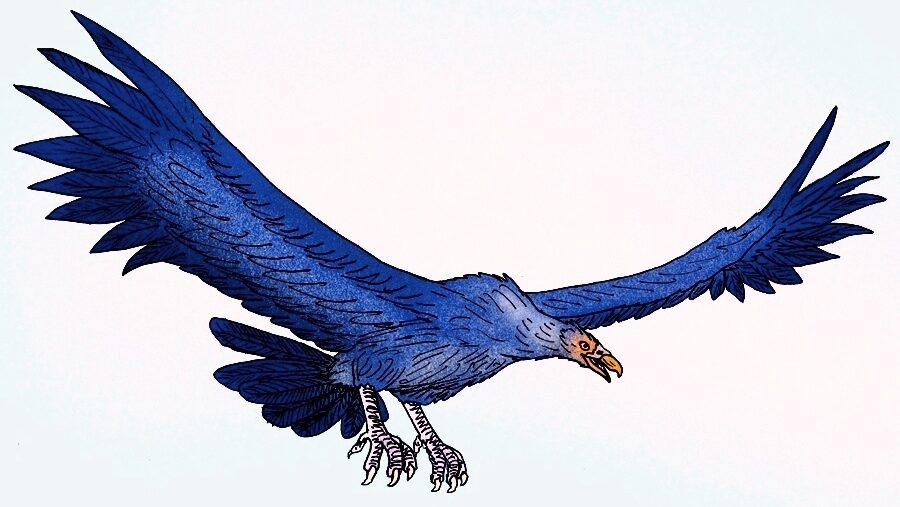
Six million years ago in the skies over what is now Argentina soared a bird so massive it seems to defy the laws of physics. Argentavis magnificens, a member of the extinct family Teratornithidae, had a wingspan of 23 feet and weighed an estimated 150-170 pounds, making it the largest flying bird yet discovered. To put this in perspective, its wings would barely fit across a standard tennis court, and when it passed overhead, it would temporarily block out the sun like a small aircraft. Paleontologists believe Argentavis may have primarily been a scavenger, using its enormous wingspan to ride thermal currents with minimal energy expenditure, much like modern condors but on a vastly larger scale. The bird’s size approached the theoretical maximum for flight capabilities under Earth’s current atmosphere and gravity, suggesting it may have benefited from stronger atmospheric conditions during the Late Miocene epoch. If featured in a science fiction film today, audiences might dismiss Argentavis as an implausible exaggeration, yet the fossil record confirms this giant was very real.
Pterodaustro: The Flamingo from Another World
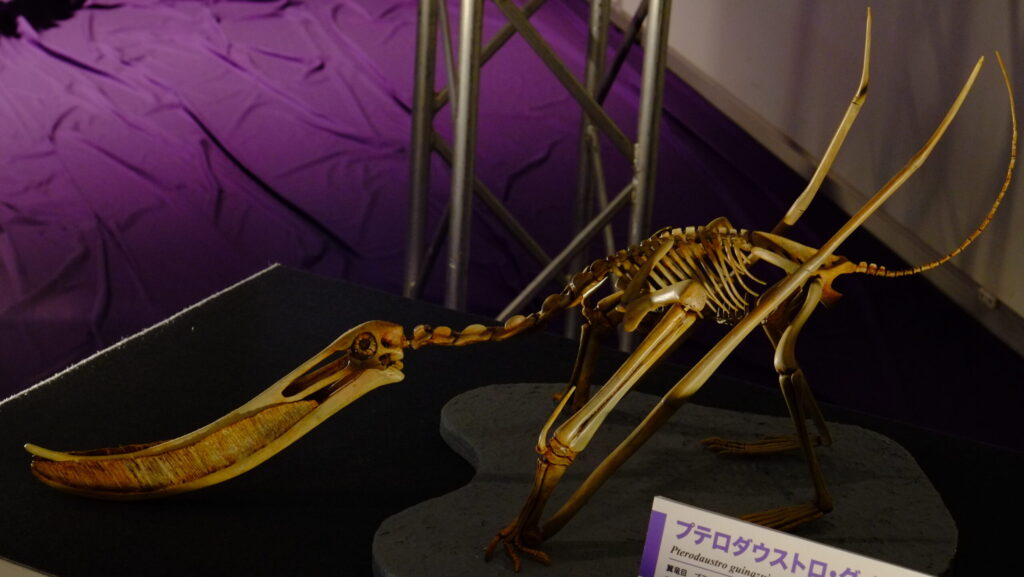
Among the many strange creatures that populated the prehistoric world, few were as bizarrely specialized as Pterodaustro guinazui, a pterosaur from Early Cretaceous Argentina that pushed anatomical specialization to extremes that seem almost fictional. Its most striking feature was its filter-feeding apparatus: a lower jaw packed with more than 500 bristle-like teeth that functioned similarly to the filtering plates in modern flamingo beaks. These densely packed teeth formed a biological sieve that allowed Pterodaustro to filter tiny organisms from shallow waters, representing one of the most specialized feeding adaptations in vertebrate history. With a wingspan of roughly four feet and distinctive downward-curved jaws filled with those strange bristle-teeth, Pterodaustro would have created a surreal sight as it waded through ancient lagoons. The fact that flying reptiles independently evolved filter-feeding mechanisms similar to those of modern birds demonstrates convergent evolution—where similar environmental pressures lead to similar adaptations in unrelated lineages—and creates creatures that seem too coincidentally similar to be real.
Mononykus: The One-Clawed Wonder
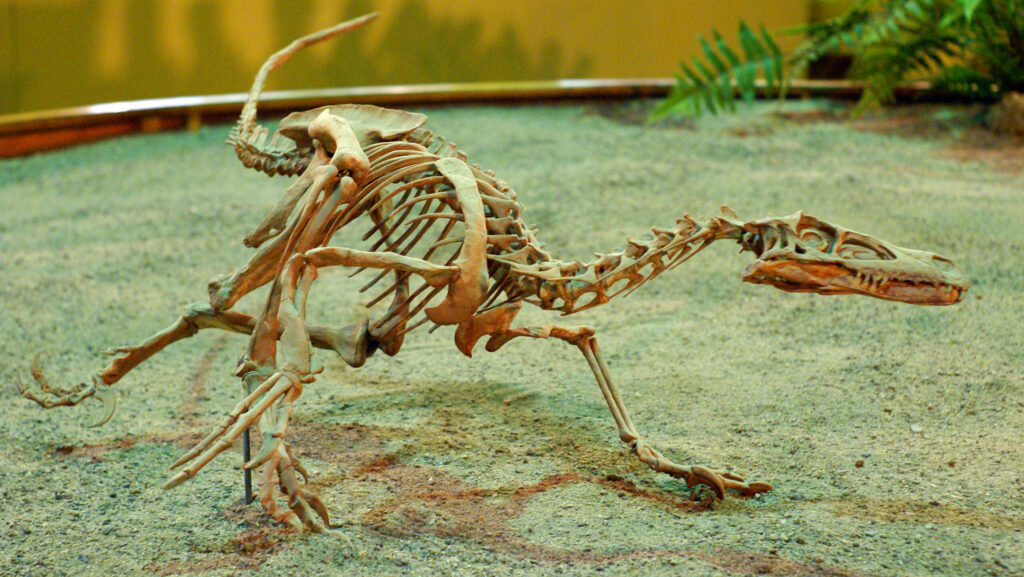
In the deserts of Mongolia during the Late Cretaceous period lived one of the strangest dinosaurs ever discovered: Mononykus, whose name means “one claw.” This turkey-sized creature belonged to the alvarezsaurids, a group of dinosaurs closely related to birds, and possessed perhaps the most bizarre forelimbs in the dinosaur kingdom. Each arm was reduced to a short, powerful appendage ending in a single, enormously enlarged claw—an adaptation so strange it initially puzzled paleontologists about its function. Current theories suggest these specialized limbs may have been used to tear apart termite mounds or logs to access insect prey, similar to modern anteaters but with an entirely different anatomical solution. Covered in feathers and with many bird-like features, Mononykus represents an evolutionary experiment that has no modern equivalent, a side branch of dinosaur evolution that approached bird-like characteristics but in a uniquely alien way. The combination of its slender, ostrich-like body, vestigial arms with single claws, and feathered covering would make Mononykus seem more at home in a science fiction film than in Earth’s actual evolutionary history.
Yi qi: The Dinosaur That Reinvented the Wing
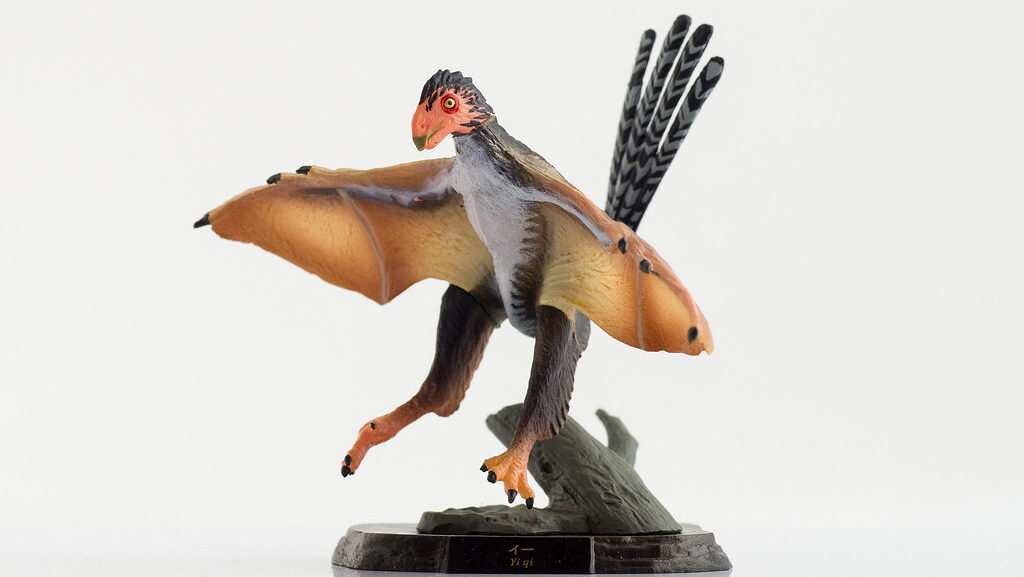
In 2015, paleontologists announced a discovery so unexpected it seemed like a hoax: a small dinosaur from China’s Jurassic period that had evolved bat-like wings independently from birds. Yi qi (pronounced “ee chee”), meaning “strange wing” in Mandarin, was a small feathered dinosaur with an extraordinary adaptation never seen before in dinosaurs or birds: a rod-like bone extending from each wrist that supported a membrane of skin to form a wing structure more similar to bats and flying squirrels than to birds. This completely unexpected configuration suggests that dinosaurs experimented with multiple forms of flight during their evolution, with Yi qi representing a bizarre side branch that didn’t survive. The creature had both feathers and membranous wings—a combination not seen in any living animal—making it look like something created for a fantasy film rather than a real animal from Earth’s past. Yi qi reminds us that evolution is not a linear process but rather a series of experiments, some successful and long-lasting, others—like membrane-winged, feathered dinosaurs—fascinating evolutionary dead ends.
The Reality Beyond Fiction: Why These Creatures Matter
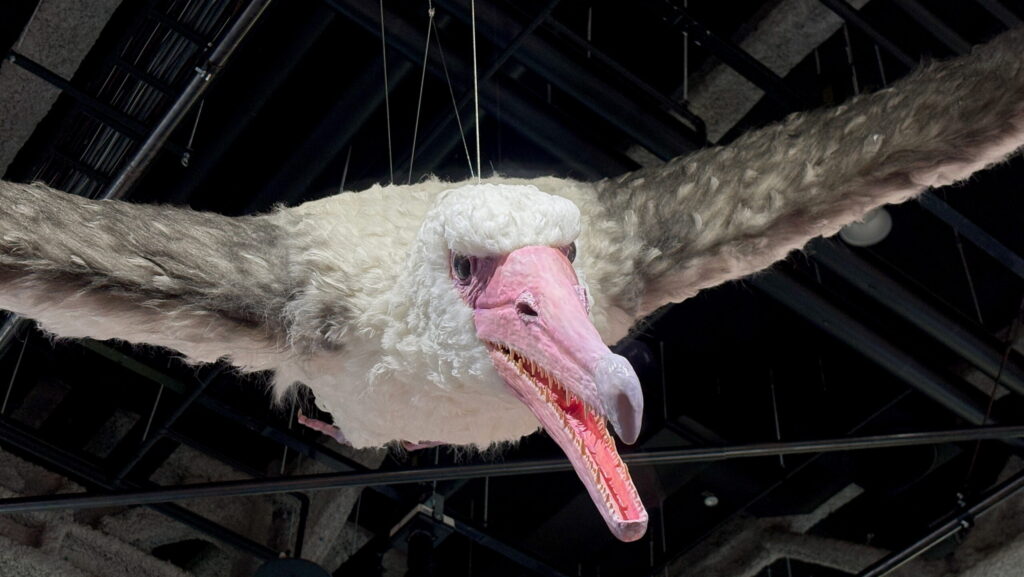
These ten prehistoric creatures blur the line between reality and science fiction not just because of their bizarre appearances, but because they challenge our understanding of evolutionary processes and biological possibilities. Each represents a snapshot of evolution’s experimentation, showing pathways that either led to modern forms or became evolutionary dead ends. The study of these seemingly alien creatures provides crucial insights into adaptation, convergent evolution, and the mechanisms that drive evolutionary change. Perhaps most importantly, these prehistoric birds and bird-like dinosaurs remind us that the actual history of life on Earth is often stranger and more wondrous than anything we could invent. By studying these creatures that seem to defy the boundary between science and fiction, paleontologists continue to piece together the complex story of how modern birds emerged from their dinosaur ancestors through a series of increasingly bizarre transitional forms. In doing so, they reveal that the most fantastic creatures aren’t always found in science fiction—sometimes, they’re found in the fossil record.
Conclusion
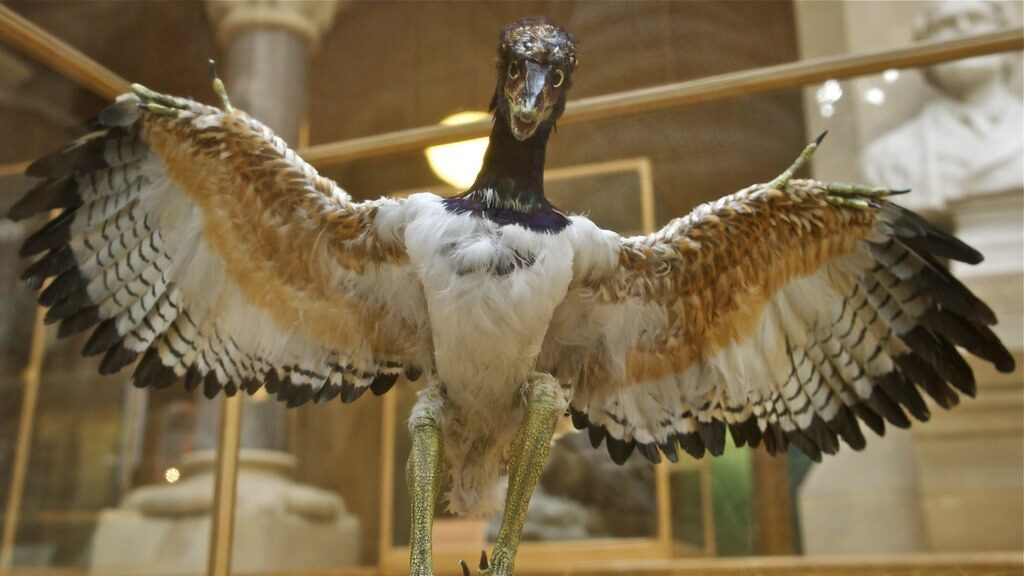
In our journey through these ten remarkable creatures, we’ve witnessed nature’s capacity for innovation that rivals the most creative science fiction. From four-winged gliders to filter-feeding pterosaurs, from gigantic flying behemoths to dinosaurs with membrane wings, the evolution of birds from dinosaur ancestors produced forms so diverse and sometimes so short-lived that they seem like evolutionary thought experiments rather than actual animals. Yet these creatures were real, leaving their imprints in stone for us to discover millions of years later. They remind us that the boundary between scientific reality and science fiction is often thinner than we imagine, and that the natural world, given enough time and environmental pressures, can produce lifeforms that challenge our understanding of what’s possible. Perhaps that’s the most important lesson these prehistoric creatures teach us: when it comes to the possibilities of life, our imagination may be more limited than nature’s.
